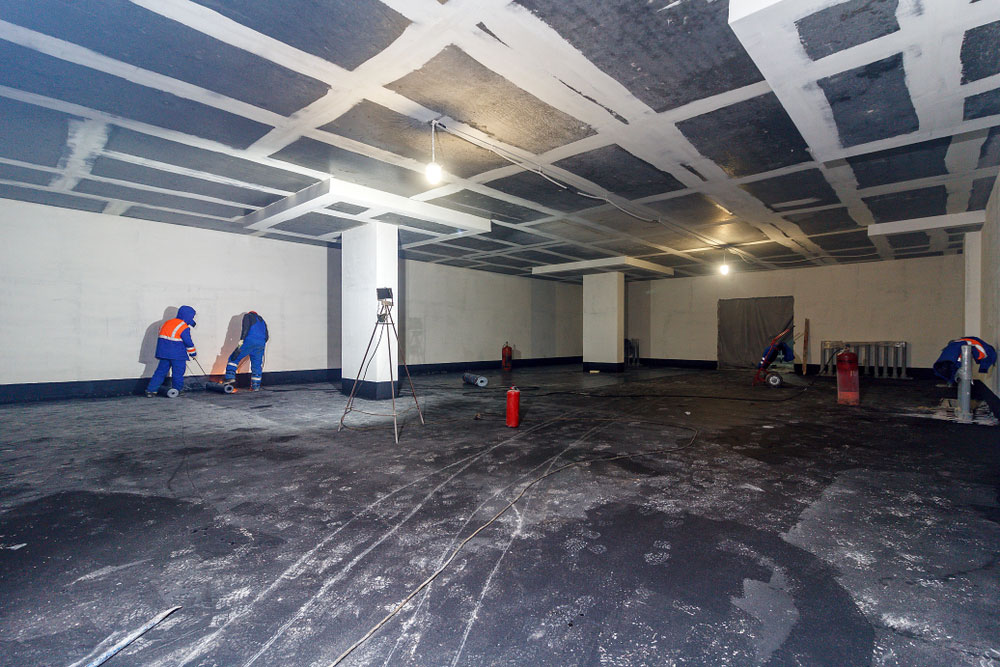Waterproofing is one of the most important defenses your home has against moisture damage. Whether it’s a basement, bathroom, or laundry area, proper interior waterproofing helps protect your home’s foundation, prevent mold growth, and maintain indoor air quality.
However, waterproofing isn’t a one-and-done solution—it can wear down over time or become outdated as your home settles or as weather patterns change. Knowing when to reassess your interior waterproofing is key to avoiding costly repairs and long-term damage.
If you notice subtle signs of water intrusion or suspect your current system may not be holding up, it may be time to take a closer look.
After Heavy Rain or Seasonal Flooding
Extreme weather is one of the most common triggers for waterproofing problems.
- Watch for water stains, damp patches, or musty odors in basements after heavy rain.
- Puddles or seepage around floor edges may signal foundation leaks or drain failure.
- Consistent flooding after storms often indicates that your system isn’t strong enough to handle large volumes of water.
If your interior waterproofing was installed years ago—or not designed to deal with recent climate changes—it’s worth reassessing to avoid worsening damage with each storm.
When You See Signs of Moisture Damage
Even minor signs of water damage can suggest that your waterproofing is no longer doing its job.
- Peeling paint or bubbling wallpaper often signals hidden moisture behind walls.
- Mold or mildew growth, especially in corners or along baseboards, can indicate high humidity or leaks.
- Efflorescence (white, chalky residue on basement walls) means water is seeping through concrete or masonry.
These signs don’t just point to a cosmetic issue—they’re red flags that moisture is entering your living space and can cause serious structural or health problems if left untreated.
During Home Renovations or Repairs
Whenever you open up walls, replace flooring, or upgrade plumbing, it’s a perfect time to evaluate your waterproofing system.
- Remodeling projects reveal hidden issues like old, damaged membranes or cracked sealants.
- Installing new flooring or drywall without checking waterproofing could trap future leaks under fresh materials.
- If your renovation includes adding new bathrooms, laundry rooms, or below-grade living spaces, those areas will need fresh waterproofing consideration.
Taking this opportunity to reassess ensures your upgrades are protected and won’t be compromised by moisture later on.
If Your Home Is Settling or Aging
Over time, every home shifts and changes—and that movement can compromise waterproofing systems.
- Cracks in basement walls or floors can form as your foundation settles, creating new paths for water.
- Older waterproofing materials like tar or plastic sheeting may have degraded and lost effectiveness.
- Systems installed decades ago may not meet modern standards or may be overwhelmed by current moisture levels.
If your home is 20+ years old or showing signs of age, it’s smart to get a professional inspection and determine whether your interior waterproofing needs an update.
Interior waterproofing is critical for protecting your home’s structure, health, and value. But like any system, it needs to be evaluated regularly to stay effective.
From extreme weather to visible damage, renovations, and home aging, there are clear signs it’s time to reassess. By staying proactive and acting early, you can save thousands in repairs and keep your home dry, safe, and comfortable year-round.
Don’t wait for water to become a visible problem—make interior waterproofing part of your long-term home maintenance strategy.

